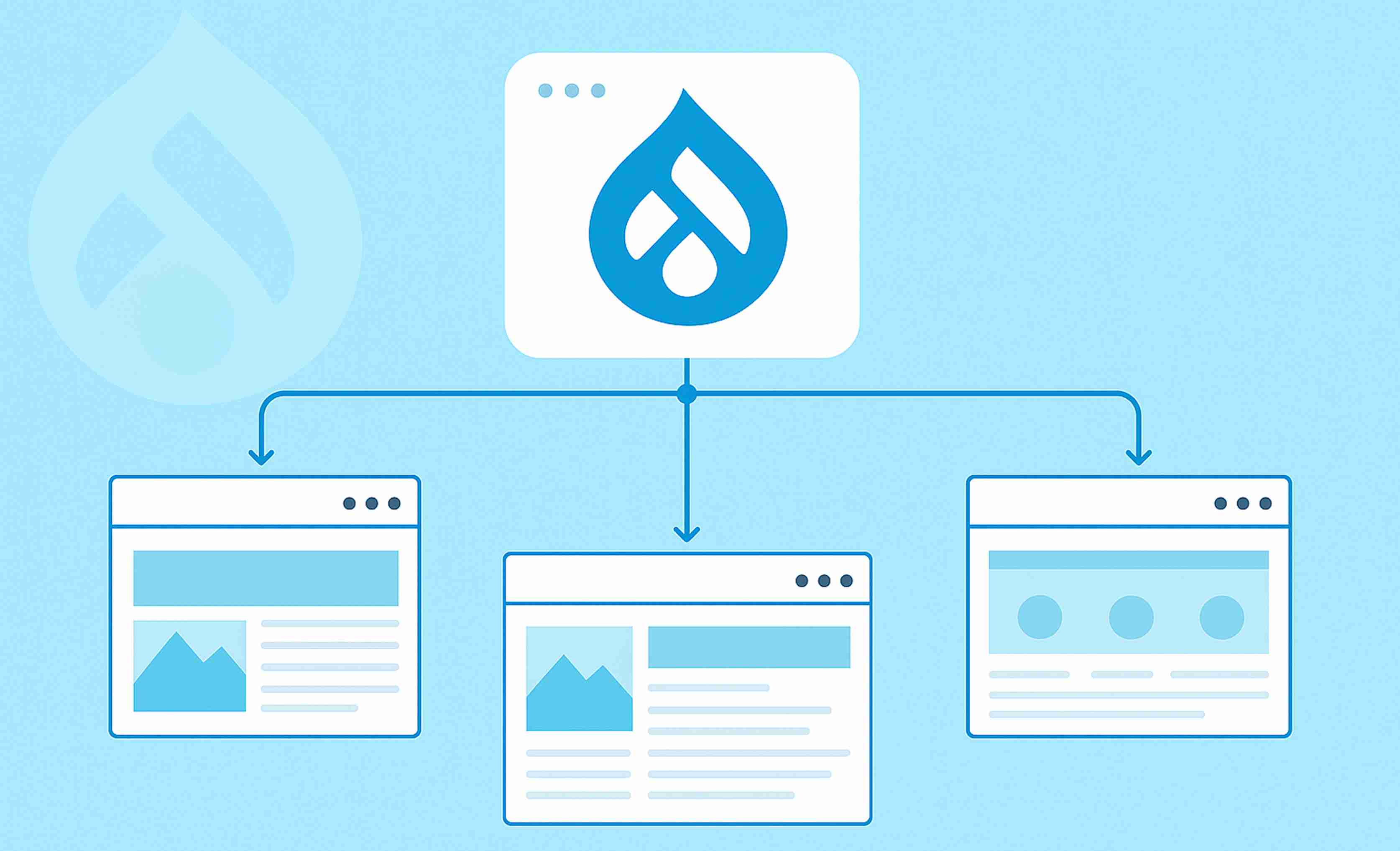How Drupal Recipes Simplify Multisite and Enterprise Deployments

In the complex world of Drupal multisite deployment and enterprise Drupal architecture, repeatability, speed, and consistency are no longer optional—they're critical. Whether you're launching 20 microsites for a university or managing a suite of portals for a government agency, you need a way to scale without chaos.
That’s where Drupal Recipes and the Drupal Recipes module come in. These powerful tools can drastically simplify your build process, streamline deployments, and help your team stay agile.
In this post, we’ll break down exactly how Drupal Recipes can save time, reduce errors, and empower your team to scale confidently—no matter how complex your digital ecosystem.
What Are Drupal Recipes?
Drupal Recipes are pre-packaged, reusable configurations—like ready-to-cook meal kits for your Drupal build. Each “recipe” contains YAML-defined elements like:
- Content models
- Theme settings
- Module configurations
- Permissions and user roles
- Layouts and block placement
- Custom components (e.g., FAQs, Blogs, Events)
These recipes help teams automate and standardize site setup, ensuring speed and consistency across the board. Whether you're starting from scratch or scaling a multisite network, Drupal Recipes reduce manual work and enforce uniform architecture.
Why Multisite & Enterprise Deployments Are So Complex?

Large-scale Drupal implementations—especially in education, government, real estate, tourism, or finance—require managing multiple websites that often share core functionality but differ slightly in content or branding.
Here’s what makes it tough:
- Dozens of departments or business units needing similar setups
- Endless repetition in site configuration
- High chances of human error
- Long and inconsistent launch cycles
- Fragmented user experiences across properties
- Scaling without strategy = chaos.
Key Benefits of Using Drupal Recipes
1. Launch Sites in Minutes, Not Weeks
Create recipes once, reuse forever. Whether it’s a blog module, event calendar, or a faculty directory, just apply the recipe and go live. Perfect for universities or franchises launching dozens of micro-sites.
2. Zero Configuration Drift
Every site gets the same set of features, permissions, and modules. No more wondering if site A has the same access rules as site B.
3. Built for DevOps & Automation
Recipes are YAML-based, easily version-controlled, and CI/CD-friendly. Automate deployments across environments and keep every site aligned—at scale.
4. Modular, Flexible, Customizable
Need a new feature for just one region or brand? Add the relevant recipe—without disrupting the whole stack.
One platform. Multiple use cases. Seamless rollouts.
5. Empowers Low-Code Admins
With the hard work baked into recipes, site administrators don’t need to configure from scratch. They get the structure they need—fast and reliable.
How Drupal Recipes Fix It All
1. Rapid Site Provisioning
Need 30 department sites by next month? Drupal Recipes let you spin up pre-configured websites in minutes—standardized and production-ready. This is perfect for universities, government bodies, or real estate chains that need to launch quickly without reinventing the wheel.
Say goodbye to site setup fatigue.
2. Consistency Across All Sites
Recipes ensure every site has the same foundational structure:
- - Same content types
- - Same design components
- - Same permissions and roles
- - Same UI/UX standards
This not only improves quality control—it also simplifies long-term maintenance.
3. Modular & Scalable
Recipes can be mixed and matched. Want to add a blog to just 5 out of your 20 sites? Drop in the blog recipe. Need an event calendar only for your tourism portal? You got it.
Think of it as building with Lego bricks—fully flexible, always consistent.
4. Simplified DevOps & CI/CD Integration
Built in YAML, Drupal Recipes are tailor-made for DevOps:
- Easily managed in Git or Composer
- Compatible with tools like Acquia Pipelines or Platform.sh
- Fully integratable into Drupal CI/CD workflows
If you're striving for Drupal 10 best practices, this is your gold standard for automation.
5. Empowers Non-Technical Teams
Since the recipes automate backend configurations, even non-developers or low-code site admins can safely launch and manage new sites—without the risk of breaking things.
This democratizes your enterprise platform and frees up your dev team for high-value tasks.
Conclusion: Simplify and Scale Your Drupal Enterprise
Whether you’re overseeing a public-sector digital transformation or modernizing a network of corporate microsites, Drupal Recipes are the missing ingredient in your stack. They bring repeatability, agility, and control to even the most complex Drupal multisite deployments.
From reducing development cycles to enabling consistent branding and functionality, Drupal Recipes give you the tools to:
- Scale faster
- Reduce risk
- Empower teams
- Adopt Drupal 10 best practices
- Future-proof your enterprise Drupal architecture
Ready to Get Started?
Want to see how Drupal Recipes can transform your multisite operations?
Book a Free Consultation with Our Drupal Experts
Let’s build a roadmap tailored to your organization’s digital goals—faster, smarter, and with fewer headaches.